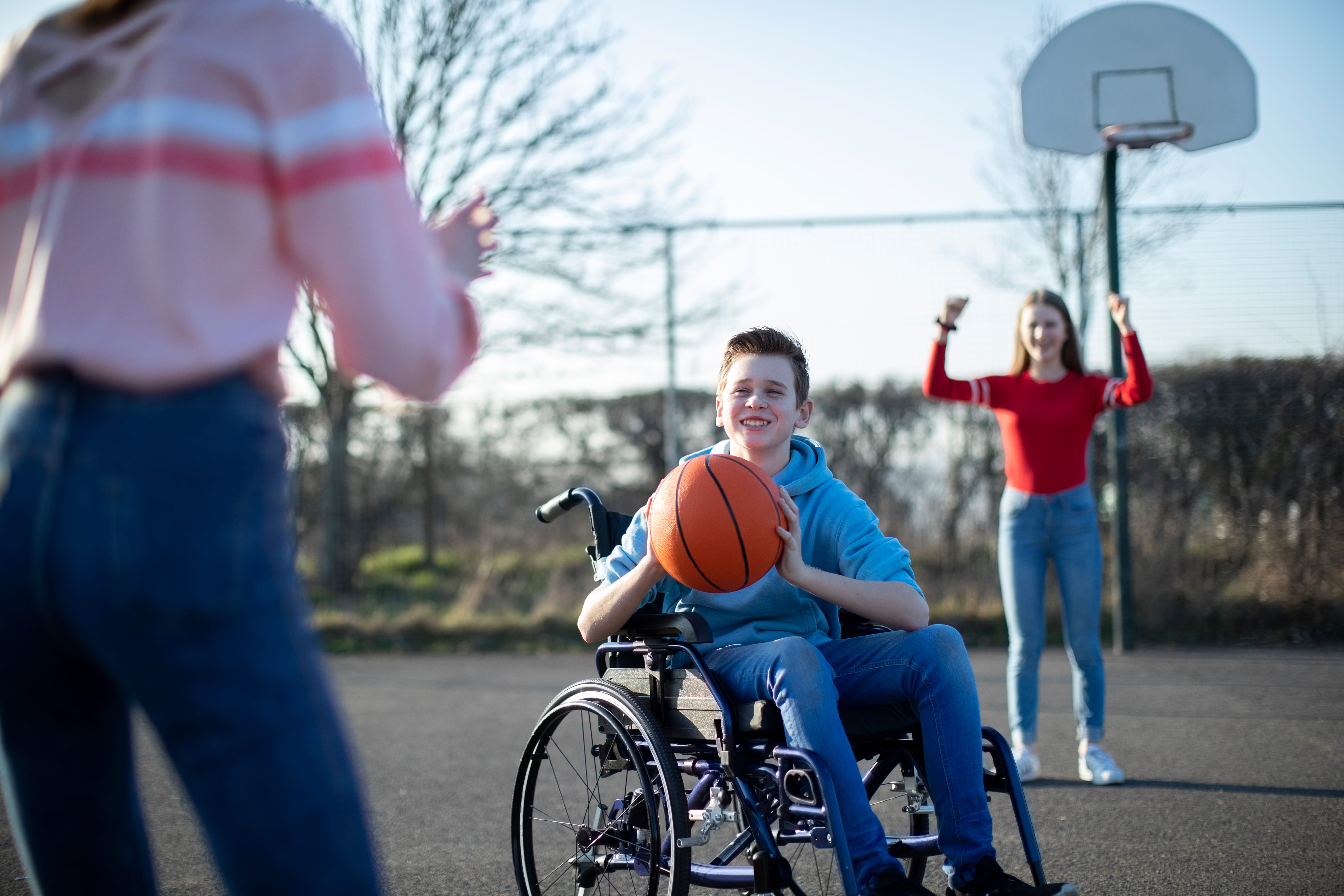On this page
Download this Fact Sheet:
Fact Sheet: Body dissatisfaction and disordered eating (260.4 KB, PDF)
What is body dissatisfaction?
Body dissatisfaction occurs when someone feels unhappy with how they look compared to what they want to look like.
This can result in a person having negative feelings about their body, which can include the size and shape of their body, particular body parts, or the overall appearance of their body.
Body dissatisfaction is the most significant changeable risk factor in the development of disordered eating and diagnosed eating disorders. It’s linked with a variety of adverse mental health outcomes, including poor self-esteem and depressive symptoms.
Many factors can influence how satisfied or dissatisfied a young person feels about their body, including self-esteem, body comparison tendencies, as well as how strongly a person believes body ideals.
These could include social or cultural pressures to conform to a particular appearance ideal (for example, thin, muscular).
These pressures can come from family, friends, peers, coaches, intimate partners, and media, including social media.
Appearance-based bullying and teasing can also increase the risk of body dissatisfaction. When a person feels dissatisfied with their body, they are more likely to engage in problematic behaviours.
These may include non-hungry eating or restrictive dieting, bingeing, increasing or decreasing movement, withdrawing from friends and family, and increasing risk-taking behaviours, such as smoking, drug use, steroid and supplementation use, cosmetic procedures and unsafe sex.
The dangers of restrictive dieting
People who experience body dissatisfaction may engage in restrictive dieting as a means of trying to modify their shape, size or weight.
While dieting and other weight-loss driven behaviours are often normalised in our society, it should not be considered a normal part of childhood or adolescence, or a solution for body dissatisfaction. Children and young people should be discouraged from engaging in restrictive dieting and intense exercise regimes that are motivated by weight loss or body shape change.
Restrictive dieting usually involves rigid rules that limit the amount and type of food that is eaten and/or how frequently food is eaten. Counting calories/kilojoules, eliminating whole food groups (for example, carbohydrates, ‘fatty’ foods), eating only a selected number of foods, fasting, skipping meals, and using meal replacements are all examples of restrictive dieting.
Some people think or hope that weight loss or changing their appearance will make them happy and self-confident, however that is rarely the case. Dieting can unfortunately mask disordered eating behaviours and attitudes towards weight, health, eating and exercise.
The diet culture in Western society often ignores diversity in body size and shape and promotes the idea there is only one ideal body type. This reinforces weight stigma and fatphobia.
Restrictive diets can shame and demonise particular foods and food groups (for example, assigns moral value to foods as ‘good’ or ‘bad’), and decrease a person’s ability to read their own physical fullness and hunger cues. These factors make it extremely challenging to have a positive relationship with food and connects a person’s weight to their worth.
Eating and body attitude
While disordered eating and eating disorders are complex in their development, people experience attitudes and behaviours towards their body, eating and physical activity across a continuum.
The continuum spans health supporting attitudes and behaviours, problematic behaviours, disordered eating and eating disorders.
People of all weights, shapes and sizes can sit anywhere along the continuum and move along it in different phases throughout their life.
Seeing this as a continuum reminds us of the importance of improving body satisfaction and establishing healthy behaviours and attitudes to food and exercise.
Health-supporting attitudes and behaviours
- Mostly neutral or positive feelings experienced about weight, body shape, size, height.
- Balanced intuitive eating, where a person can respond to their body’s physical cues for hunger and feeling satisfied.
- Eating regularly, adequately and for nourishment and enjoyment.
- Exercise and movement are consistently engaged in for enjoyment and overall health benefits.
Unhelpful behaviours
- Increased level of body dissatisfaction. A preoccupation with shape, size, muscularity, leanness, food, eating and their body.
- Dislikes the way their body looks.
- Eating and exercise are driven by a desire for weight loss, change in body shape and/or muscle growth.
- May experience feelings of guilt after eating particular foods (for example, breaking a restrictive diet, eating a food categorised as ‘bad’ or ‘naughty’) and exercise may be used to earn food, compensate for eating, or for food choices.
- Occasional binge eating/overeating.
Disordered eating
Disordered eating refers to a range of eating behaviors that can cause distress and harm. It can include:
- High level of body dissatisfaction.
- Frequent problematic eating behaviours, including restrictive dieting and excessive or extreme exercise, in an attempt to lose weight/change body shape.
- Binge eating and/or purging.
- Engaging in compensatory behaviours such as skipping meals, exercising to ‘burn off’ foods eaten.
- Over exercising/training even if injured or ill.
Disordered eating shares many of the characteristics of eating disorders but to a lower level of severity.
Supporting children and young people to develop healthy attitudes
Learning communities can support children and young people to develop healthy attitudes and behaviours by:
- Incorporating evidence-based programs into the curriculum that address the modifiable risk and protective factors that underpin the
development of body dissatisfaction and disordered eating. - Encouraging staff to role model positive behaviours around food, exercise and body image.
- Adopting a zero-tolerance to appearance-based bullying and teasing, and ensuring it is included in existing anti-bullying protocols and policies
- Ensuring healthy eating programs are balanced in their approach.
- Encouraging involvement in growing, preparing and cooking food.
What can I do if I’m concerned about a child or young person?
If you're concerned about someone, it's important that they are supported to seek help. Speak with your senior or wellbeing staff and follow your learning community’s policies and guidelines.
You could also call the Butterfly National Helpline on 1800 ED HOPE (1800 33 4673) or email: www.butterfly.org.au/get-support
The helpline offers free and confidential support for anyone in Australia concerned about an eating disorder or body image issue.
Butterfly’s qualified counsellors provide information, counselling, guidance about treatment, care and support, and referrals to eating disorder practitioners.
-
External links
-
Bibliography
National Eating Disorder Collaboration (NEDC) (2010).
Free to BE, A Body Esteem Resource, The Butterfly Foundation (2011).
Fairweather-Schmidt, A.K., Lee, C. & Wade, T.W. (2015). A longitudinal study of midage women with indicators of disordered eating. Developmental Psychology, 51, 722–729.
Larsen, P.S., Andersen, A.N., Olsen, E.M., Andersen, P.K., Micali, N., Katrine Strandberg‐Larsen, K.S. (2019). Weight trajectories and disordered eating behaviours in 11‐ to 12‐year‐olds: A longitudinal study within the Danish National Birth Cohort, European Eating Disorders Review. 1–9. doi: 10.1002/erv.2680
Paxton, S. J., Neumark-Sztainer, D., Hannan, P. J., Eisenberg, M. (2006). Body dissatisfaction prospectively predicts depressive mood and low self-esteem in adolescent girls and boys. Journal of Clinical Child and Adolescent Psychology, 35, 539-549.
Rodgers, R. F., Paxton, S. J., & McLean, S. A. (2014). A biopsychosocial model of body image concerns and disordered eating in early adolescent girls. Journal of Youth and Adolescence, 43, 814-823.
National Eating Disorder Association (NEDA) (2018). Orthorexia. Retrieved from https://www.nationaleatingdisorders.org/learn/by-eating-disorder/other/orthorexia



